A review of the effects of forest fire on soil properties
Alex Amerh Agbeshie·Simon Abugre·Thomas Atta-Darkwa·Richard Awuah
Abstract Forest fires are key ecosystem modifiers affecting the biological,chemical,and physical attributes of forest soils.The extent of soil disturbance by fire is largely dependent on fire intensity,duration and recurrence,fuel load,and soil characteristics.The impact on soil properties is intricate,yielding different results based on these factors.This paper reviews research investigating the effects of wildfire and prescribed fire on the biological and physico-chemical attributes of forest soils and provides a summary of current knowledge associated with the benefits and disadvantages of such fires.Low-intensity fires with ash deposition on soil surfaces cause changes in soil chemistry,including increase in available nutrients and pH.High intensity fires are noted for the complete combustion of organic matter and result in severe negative impacts on forest soils.High intensity fires result in nutrient volatilization,the break down in soil aggregate stability,an increase soil bulk density,an increase in the hydrophobicity of soil particles leading to decreased water infiltration with increased erosion and destroy soil biota.High soil heating (> 120°C) from high-intensity forest fires is detrimental to the soil ecosystem,especially its physical and biological properties.In this regard,the use of prescribed burning as a management tool to reduce the fuel load is highly recommended due to its low intensity and limited soil heating.Furthermore,the use of prescribed fires to manage fuel loads is critically needed in the light of current global warming as it will help prevent increased wildfire incidences.This review provides information on the impact of forest fires on soil properties,a key feature in the maintenance of healthy ecosystems.In addition,the review should prompt comprehensive soil and forest management regimes to limit soil disturbance and restore fire-disturbed soil ecosystems.
Keywords Forest fires·Low-severity fire·Mineralization·Soil available nutrients·Soil organic matter·Volatilization
Abbreviations
AFAC Australasian Fire Authorities Council
C Carbon
CEC Cation exchange capacity
CO2Carbon dioxide
EC Electrical conductivity
GHG Greenhouse gas(es)
MBC Soil microbial biomass carbon
MBN Soil microbial biomass nitrogen
N Nitrogen
NH4+Ammonium
NO3-Nitrate
OC Organic carbon
OM Organic matter
P Phosphorus
PF Prescribed fire
SOC Soil organic carbon
SOM Soil organic matter
TC Total carbon
TN Total nitrogen
TP Total phosphorus
WF Wildfire
Introduction
Soil is one of the most valuable natural resources utilized across socio-ecological and natural systems (Alcañiz et al.2018),and plays acritical role in nutrient cycling,as a warehouse for minerals,in carbon sequestration,and support for plant growth (Osman 2013).It is considered a nonrenewable natural resource on a human timescale because of its rapid deterioration and slow phase of formation (Lal 2015).Therefore,degradation of the biological,chemical,and physical properties of forest soils reduce its capacity to function fully,with such effects either temporary or permanent.Key drivers of soil degradation in forest ecosystems are deforestation,fires,erosion,and soil contamination(Ghazoul et al.2015;Silvério et al.2019).
Fires are considered a destructive factor in most forest ecosystems of tropical,temperate,and boreal areas(Fernández-García et al.2019a,b),and are viewed as global phenomena affecting most land areas (Bento-Gonçalves et al.2012).The evidence of fire was first discovered in the 360-million-year-old fossil records of the Carboniferous period (Verma and Jayakumar 2012).Fire influences forest ecology and functioning by affecting nutrient turnovers,hydrophobicity,species composition and regeneration,and ecological biodiversity.Wildfires are often a result of anthropogenic activities,while naturally occurring fires represent only a small fraction of global fires (Knorr et al.2016).Forest fires are a major cause of soil degradation and nutrient losses via volatilization and erosion (Gómez-Rey et al.2013).
Forest fires affect the biological and physico-chemical quality of soils and diminish the nutrient pool through various mechanisms,including volatilization,oxidation,ash transfer,and erosion (Pellegrini et al.2018).Akburak et al.(2018) reported a drastic decline in microbial biomass carbon on a short-term basis following forest fires.Raison et al.(1986) also reported a reduction in nutrient pools such that there was a decline of 50-75% of nitrogen (N),35-50% of phosphorus (P),and 25-50% of magnesium (Mg) via volatilization and oxidation processes.Mataix-Solera et al.(2011)observed that forest fires with temperatures greater than 300°C resulted in the destruction of soil water repellence,with a significant impact on soil water cycle and erosion characteristics (Inbar et al.2014).
However,the impact of fires on soil quality indicators is largely dependent on their severity and frequency (Johnston and Barati 2013;Pellegrini et al.2018;Pérez-Izquierdo et al.2021).A review by Certini (2005) found that an intense fire moving at a slow pace resulted in more damage to the soil than a fast-moving fire.Moreover,temperatures of 850°C and higher may be attained on soil surfaces with dry,heavy fuel loads,and may have destructive effects on soil properties (DeBano 2000).Certain nutrients are also more vulnerable to fire than others.For example,levels of potassium(K),calcium (Ca),and magnesium (Mg) may be increased or unaffected by fire,while sulphur (S) and nitrogen (N)usually decline.Temperature specifically regulates the volatilization of nutrients within the soil.In organic matter,N begins to volatilize at 200°C (Knicker 2007),while Ca requires 1484°C to vaporize (Johnston and Barati 2013).Fires of high intensity can also alter soil physical properties and make it more vulnerable to nutrient depletion by erosion.
With current global warming,higher temperatures and extreme droughts significantly increase the risk of forest fires (Zhang and Biswas 2017).There have been several recent predictions on the possible increase in fire duration,intensity,and frequency in forested regions,especially in the tropics,because of higher temperatures (Zhang and Biswas 2017;Auclerc et al.2019;Addo-Fordjour et al.2020).Therefore,increased fire risk will not only affect forest folra,but also soil physical,chemical,and biological properties(Romeo et al.2020).Fire influence forest soils in complex ways but have not been studied as comprehensively compared to the effects of vegetation.Fires on forest soils influence a wide range of processes,including organic matter loss (Knicker 2007),nutrient availability and their dynamics(Cavard et al.2019),and revival of vegetation after the fire(Rodríguez et al.2018).Consequently,information on the changes to soil properties following fire is key to finding sustainable and adaptable management practices of soils and forests (Zhang and Biswas 2017).The objective of this paper is to review the current knowledge on forest soil modifications following fire disturbance.
Concept of wildfire and prescribed fire
Wildfire
The term “wildfire” has been used to define fires outside urban areas (Fig.1).The Australasian Fire Authorities Council (AFAC 2010) considers wildfire to be any unintentional vegetation fire,including forest fires and shrub fires.The United States has also described wildfire as “any nonstructure fire that occurs in the wildland” (National Wildf rie Coordinating Group 2011).In Australia,the term “bushfires” has also been denoted as any vegetation fire (AFAC 2010).Forest fire is the term applied to any wildfire or bushfire in the Europe (European Commission 2010).Within the past decade,major wildfires have occurred ( https://blog.batchgeo.com/largest-wildfires/) (Table 1),with devastating effects in different regions.For example,between 1970 and 2017 in Canada,about 5.6 million acres of vegetation had been degraded annually from 8000 wildfire incidents(Tymstra et al.2020).Current climate change predictions,coupled with more recurrent and prolonged droughts,would exacerbate the incidence of wildfires in many agroecologies(Caon et al.2014).
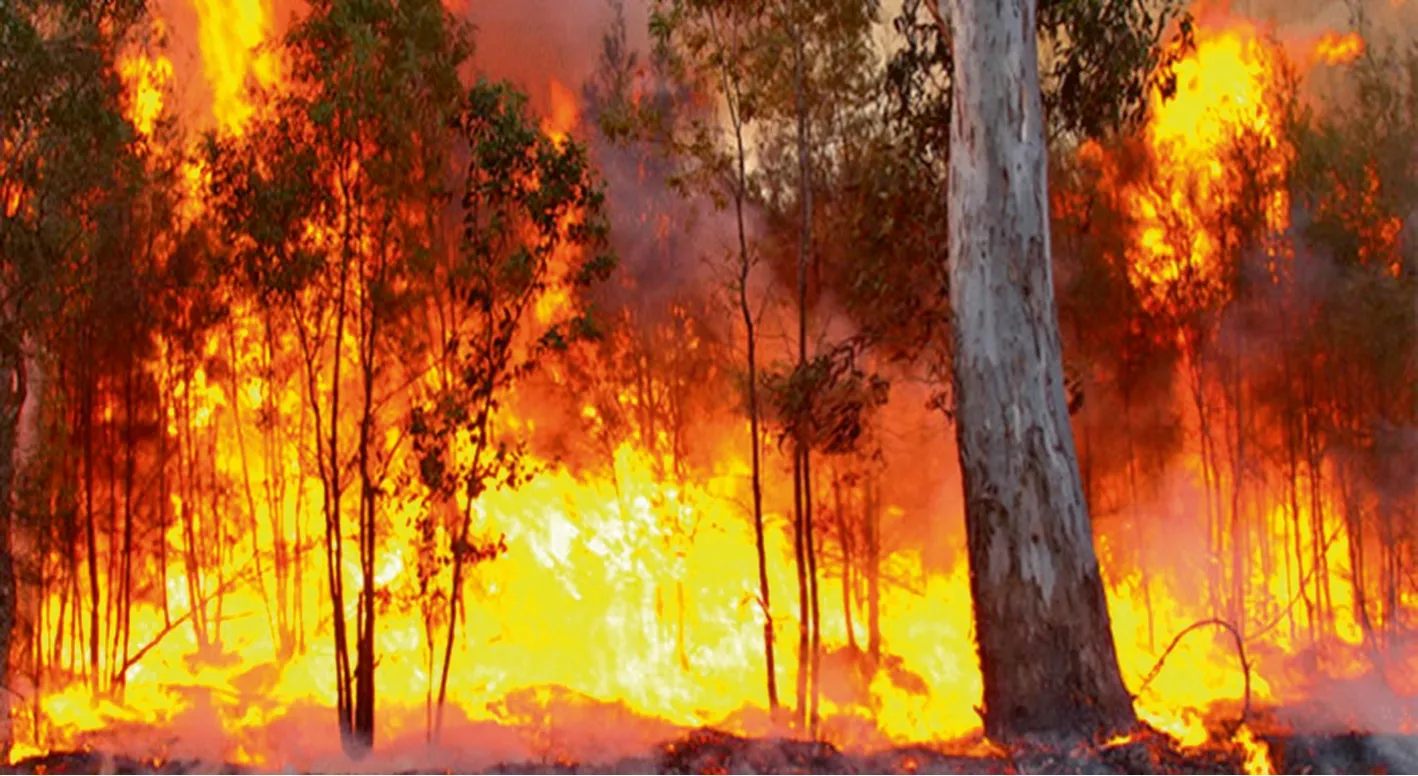
Fig.1 High-intensity bushfire in native vegetation.Photo credits to Ghana Districts News,Ghana,Africa,January 2018(https://ghana distr icts.com/Home/Reader/3c5f5 81-09a6-4cb6-86)
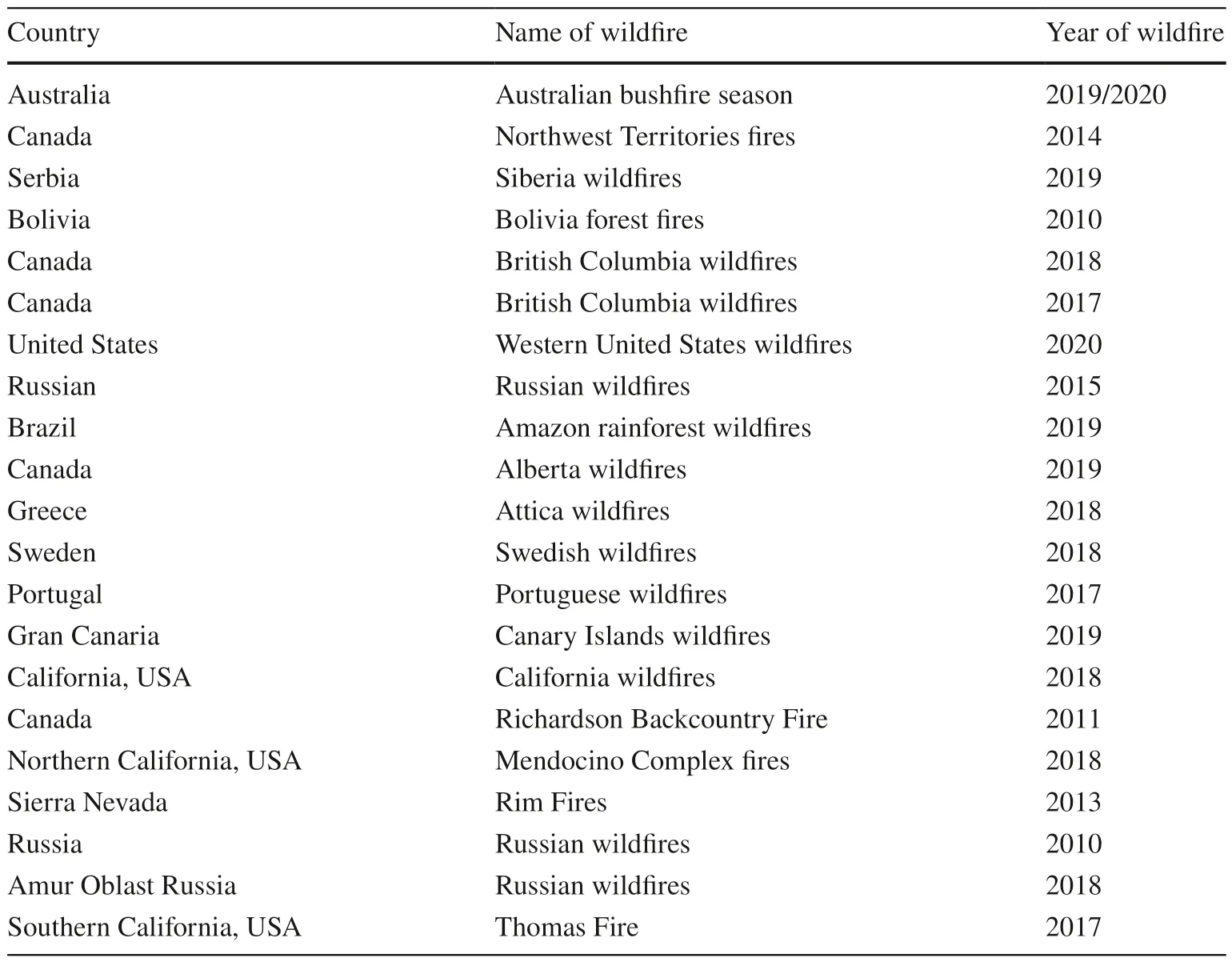
Table 1 Major wildfires worldwide in the past decade
Bushfire,forest fire,or wildfire,regardless of name,is a major disturbance affecting forest ecosystems.Its impact on soil properties is driven by its intensity,frequency,and duration (Bento-Gonçalves et al.2012).Fire intensity,which relates to the heat output per area burnt per time,can be classified as low intensity (<100°C),medium intensity (up to 250°C),and high intensity (> 350°C) (Caon et al.2014).However,the severity of wildfires is largely dependent on the fuel load present in the ecosystem,the soil type and moisture content,and the fire intensity.Several researchers have documented the severity of wildfires on soil properties(Dooley et al.2012;Vega et al.2013;Ibáñez et al.2021;Jhariya and Singh 2021).In grassland vegetation,Liu et al.(2018) observed an increase in soil nutrients following a low-intensity wildfire.Similar findings were made by Inbar et al.(2014) and Hosseini et al.(2017).However,moderate to high-intensity wildfires have generally been associated with reduced physical and biological properties.For instance,Varela et al.(2015),Downing et al.(2017),and Heydari et al.(2017) reported negative effects of wildfire on water content,water repellence,bulk density,and stable aggregates,while Knelman et al.(2015),Fernández-García et al.(2019a,b) and Moya et al.(2019) observed decreased microbial biomass and enzymatic processes resulting from wildfires.Thus,evaluating the impact of wildfire is crucial since it results in changes in soil physical,chemical,and biological properties in the short-and long-term.
Prescribed fires
Prescribed fires or prescribed burning are low-intensity fires used to achieve specific management objectives (Hiers et al.2020;Francos and Úbeda 2021).Fire is used as a scientific tool to manage fuel load (organic material) in forested areas to prevent or mitigate a possible wildfire (Bento-Gonçalves et al.2012) (Fig.2).While eliminating the accumulation of large fuel loads,prescribed burning is also used to regenerate certain species (Kemp et al.2016),to clear land in slash-and-burn agriculture (Dicen et al.2020) and as a drill by firefighters (Shaltout and Ismail 2020).In addition,prescribed fires modulate soil properties and ecological processes,control forest diseases and insect pests,and influence plant and animal biodiversity in any vegetative ecosystem(Alcañiz et al.2018).Due to the low severity of prescribed fires,their effects on soil properties are generally positive(Fellows et al.2018;Dems et al.2021).
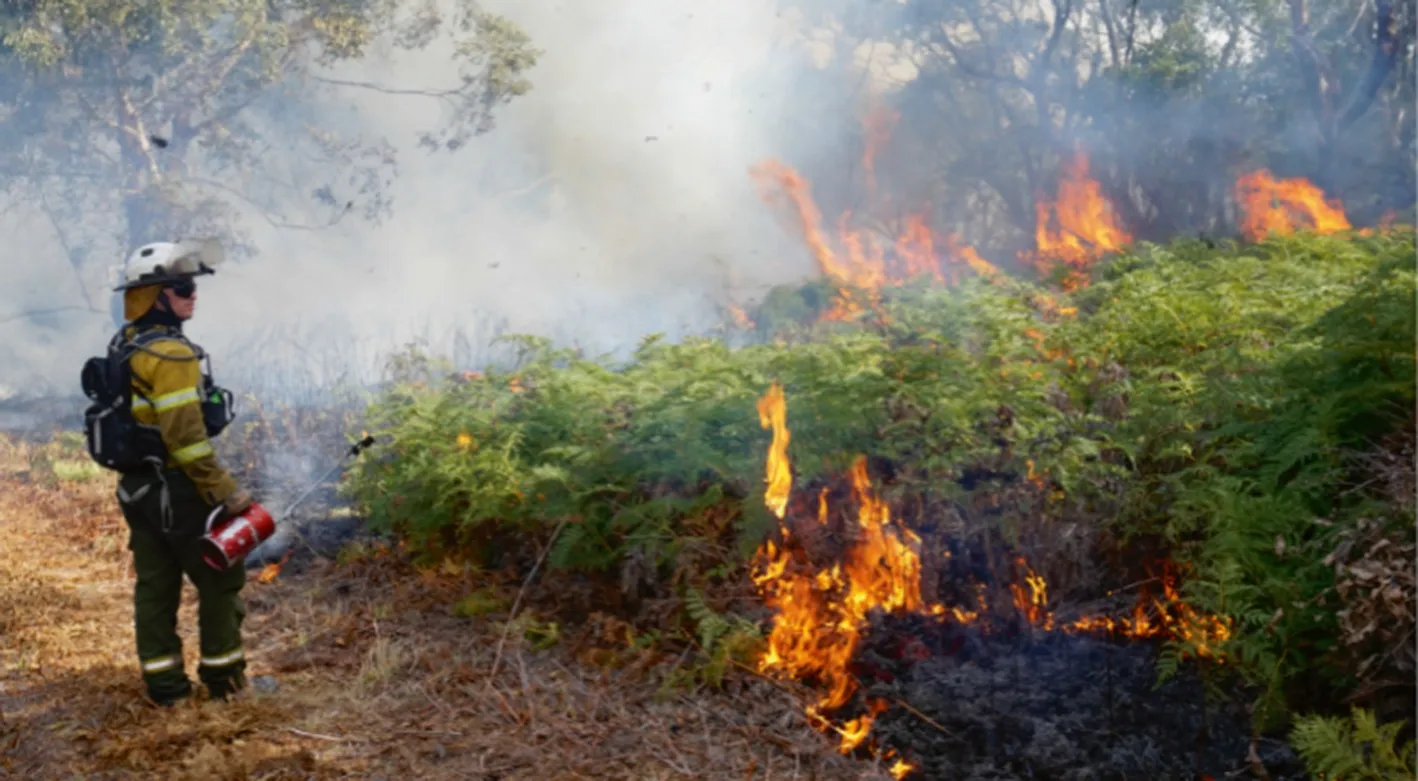
Fig.2 A low-intensity prescribed fire.Photo credits to Environment SA News,South Australia,Australia,October 2018 (https://www.envir onment.sa.gov.au/news-hub/news/artic les/2018/10/presc ribed-burns)
The positive impacts have been documented by several researchers (Goberna et al.2012;Alcañiz et al.2016;Francos et al.2019).Switzer et al.(2012),Badía et al.(2014),and Akburak et al.(2018) reported increased base cations after prescribed burning,which was due to the accumulation of ash on the soil surface.Similarly,Muqaddas et al.(2015) and Franco et al.(2019) found increased soil pH in burnt soils following prescribed fire.In addition,electrical conductivity increased in burnt soils after low-intensity prescribed fires due to the release of soluble inorganic ions and the creation of black carbon (Alcañiz et al.2016;Francos et al.2019).Notwithstanding the benefits of prescribed burning,its application could be detrimental to the soil ecosystem if temperatures increase beyond the allowable threshold for low-intensity fires (Francos and Úbeda 2021).
Effect of fire on soil properties
Forest fires significantly influence the biological,chemical,and physical properties of soils (Panico et al.2 020;Ribeiro-Kumara et al.2020).During the fire,heat transfer from burning biomass on the surface and within the soil is directly responsible for the changes that occur (O’Brien et al.2018).Fire impacts on soil properties are a function of intensity,duration,and frequency,which constitute fire severity(Alcañiz et al.2018;Lucas-Borja et al.2020;Fernández-García et al.2021).However,modifications in soil properties are driven by the temperature of the soil during burning as illustrated in Fig.3 (Santín and Doerr 2016),as well as soil characteristics (e.g.,water content and organic matter)(Sazawa et al.2018).The following subsections illustrate the impact of fire on soils of various ecosystems,with results summarised in Tables 2,3,and 4.
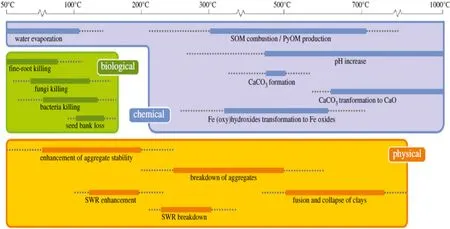
Fig.3 Effects of temperature ranges from fires on soil properties; adapted from Santín and Doerr (2016)
Chemical attributes
Several studies have reported fire impact on soil chemical attributes (Table 2).The addition of ash following completeor partial burning of biomass and organic matter and their incorporation into the soil significantly alters soils chemistry(Maksimova and Abakumov 2015;Jhariya and Singh 2021;Li et al.2021).Soil temperatures > 200°C following a forest fire incinerate organic matter and produce char compounds,leading to ash formation and increased pH.
Soil organic carbon
Soil organic carbon (SOC) is one of the most studied factors of soils following a fire due to its relevance to soil quality(Hobley et al.2017;Aaltonen et al.2019).However,changes in SOC are variable and depend on fire duration,available biomass,and its moisture content,and fire type and intensity (Reyes et al.2015).Such variations result in the nearly total loss of soil organic matter (Miesel et al.2015),charring (Zhang and Biswas 2017),a small distillation of minor compounds (Certini 2005),and/or increased SOC content to about 30% as in prescribed burning (Alcañiz et al.2018).Loss of SOC starts around 200-250°C,whereas its complete combustion is around 460-500°C (Badía et al.2014).Studies by Goberna et al.(2012) forRosmarinus officinalisL.in Spain,Switzer et al.(2012) for a Douglas-fir forest in Canada,Downing et al.(2017) for Kenyan alpine moorlands,Akburak et al.(2018) for aQuercus frainettoTen.forest in Turkey,and Fernández-García et al.(2019a,b) for aPinus pinasterAit.forest in Spain,showed no change in SOC after fire,while Bennett et al.(2014) and Muqaddas et al.(2015) for wet sclerophyll forests in Australia,Liu et al.(2018) for grasslands in China,and Moya et al.(2019) for aPinus halepensisMill.forest in Spain reported changes in SOC following fire.
The impacts of fire on soils are highly variable and suggest that low-intensity fires result in little or increased change the SOC,whereas high-intensity fires result in decreased SOC (Caon et al.2014).In their study on the effects of wildfire in Aleppo pine (Pinus halepensisMill.)forests in Spain,Badía et al.(2014) reported a 27.9% reduction in SOC in the 1-cm soil layer after a highly severe fire.Similarly,Moya et al.(2019) recorded a 21.0% reduction in a Lithic Haplocalcid soil when a moderate to high intensity wildfire occurred in aP.halepensisforest in Spain.Reduction in SOC after high-intensity fires may be due to several factors,including the combustion of SOM,increased rates of C mineralization,volatilization,and C solubilization because of high pH (nutrient-rich ash) (Rodriguez-Cardona et al.2020).In contrast,Akburak et al.(2018) for aQ.frainettoforest in Turkey,and Fernández-García et al.(2019a,b) for aP.pinasterforest in Spain reported no effects on SOC following wildfire.Elsewhere,Alcañiz et al.(2016)for aP.halepensisforest in Spain and Liu et al.(2018) for grasslands in China,recorded a 19.4% and 11.2% increase in SOC after a low intensity prescribed fire and a wildfire,respectively.Thus,low-intensity fires are associated with increased SOC due to increased pyrogenic C resulting from incomplete combustion of organic matter,decomposition of incomplete burnt biomass,and the addition of ash (Sánchez Meador et al.2017;Santín et al.2018;Hu et al.2020).The combustion of C and the ash produced during low-intensity forest fires are referred to as black carbon (BC) (Thomas et al.2017;Gao et al.2018).Black carbons are highly condensed carbons,resistant to microbial attacks,that are generated after a fire.Their presence in the soil has been associated with an increased soil organic matter pool (Nave et al.2011;Caon et al.2014).


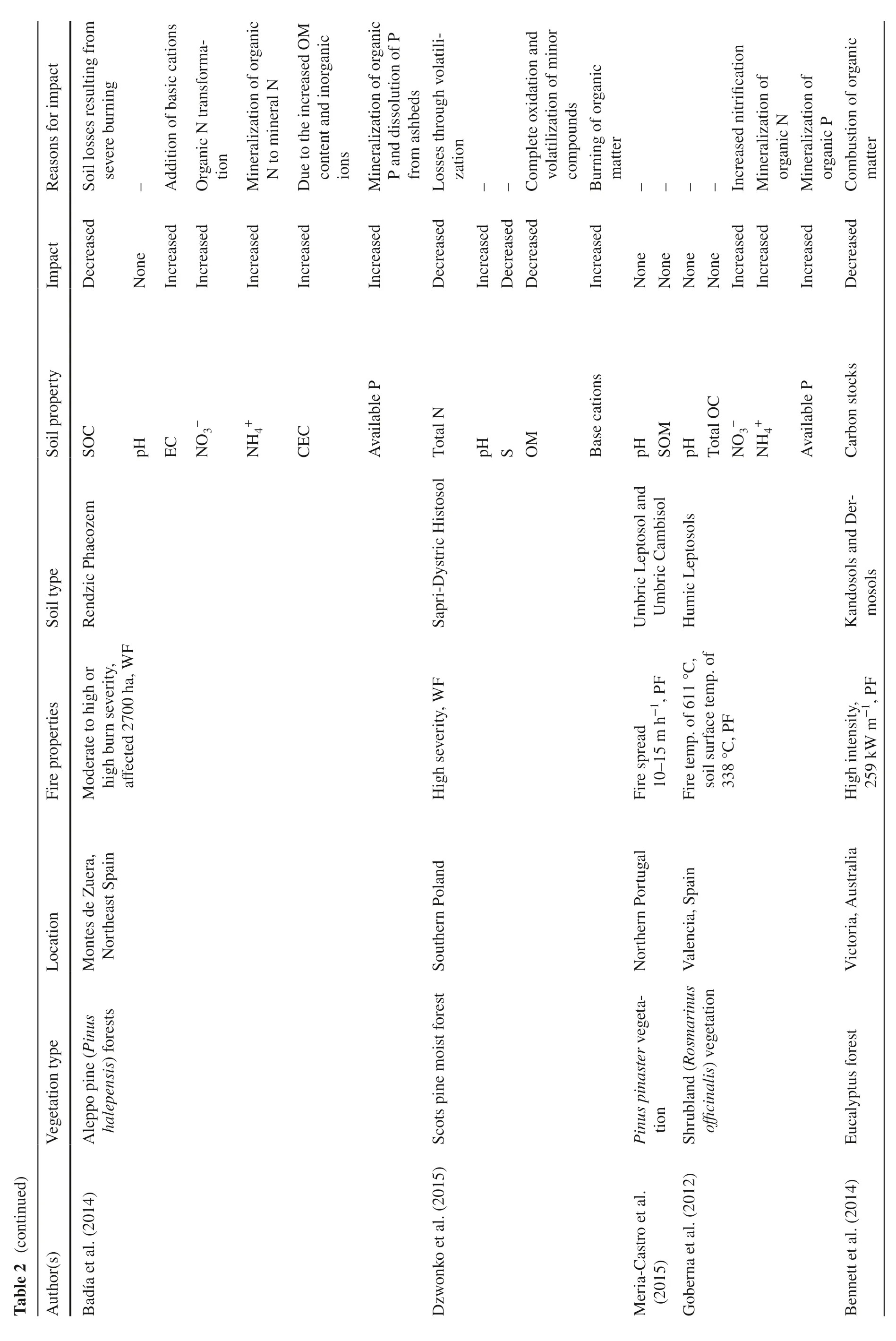

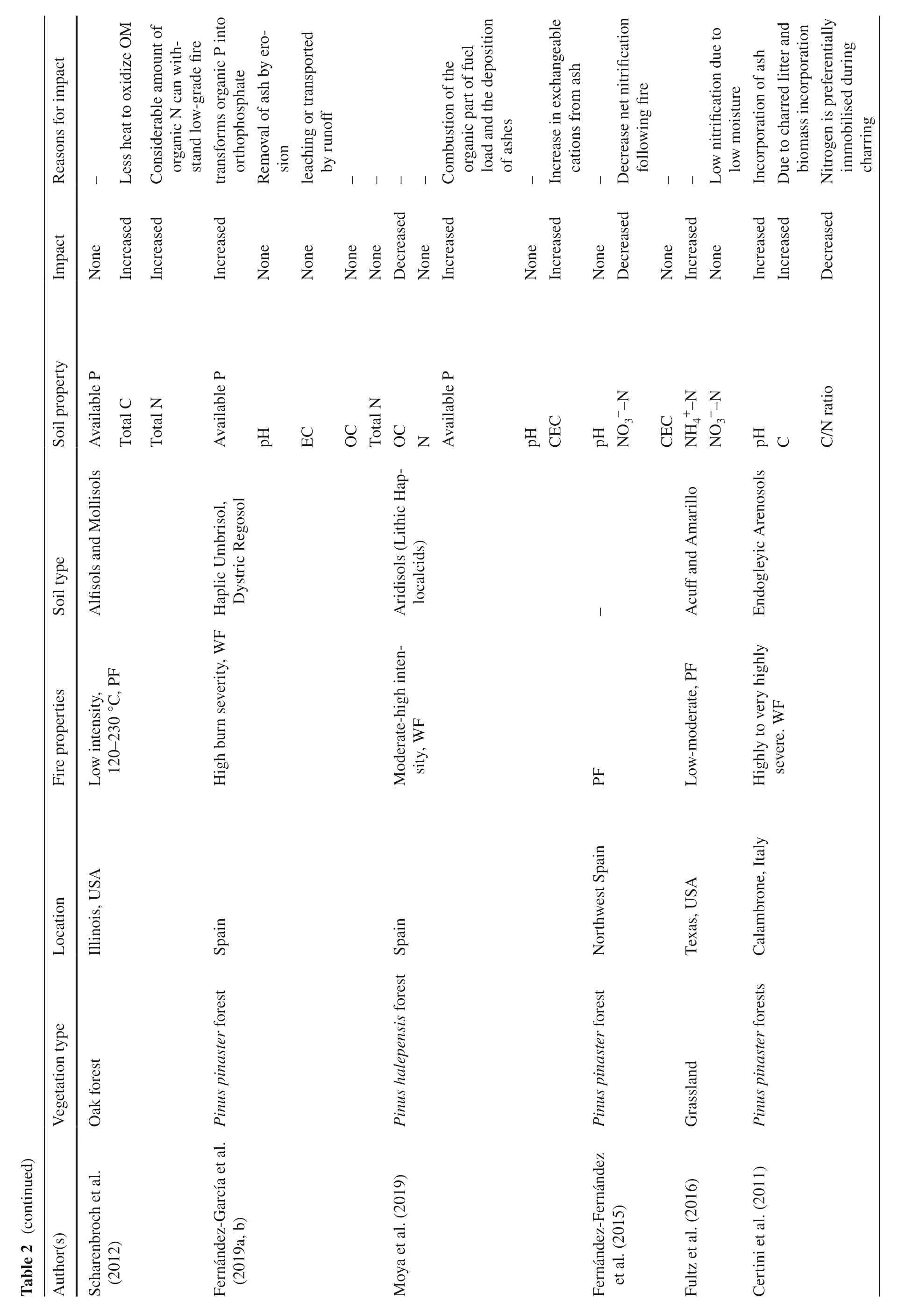

Soil reaction (pH)
During forest frie,losses occur in biomass and organic layers and there is a resultant addition of nutrient-rich ash onto the soil surface.This increases pH and significantly influences soil chemical and biological properties.Higher pH is found in soils with higher burn severity (temperatures > 450°C)(Knicker 2007).Several researchers have documented an increase in pH after frie (Dzwonko et al.2015;Akburak et al.2018;Francos et al.2019;Hinojosa et al.2021).A report by Alcañiz et al.(2016) noted that the prescribed burning ofP.halepensisforests in Spain resulted in a significant increase in pH.In addition,Akburak et al.(2018) reported a similar increase in pH after a fire in aQ.frainettoforest in Turkey.Significant increases in soil pH,especially after high-intensity fires,may be due to the addition of nutrient-rich ash(base cations) after the burning of organic materials and the denaturation of organic groups from organic matter (Alcañiz et al.2018).However,an increase in pH may be dependent on the initial pH,nutrient content,and the quantity of deposited ash (Neary et al.2005).In contrast,other reports reported that pH remained unchanged following fire (Badía et al.2014;Fernández-Fernández et al.2015;Fultz et al.2016;Downing et al.2017;Fernández-García et al.2019a,b).This could be associated with environmental conditions after fire (e.g.,erosion;Fernández-García et al.2019a,b),and low to moderate fires (Valkó et al.2016;Alcañiz et al.2018).Soil pH is a key factor influencing available nutrients(Roques et al.(2013).For example,phosphorus becomes unavailable by forming insoluble minerals with iron at low pH,while at high pH levels,it is immobilized by calcium(Neary et al.2005).
Nitrogen
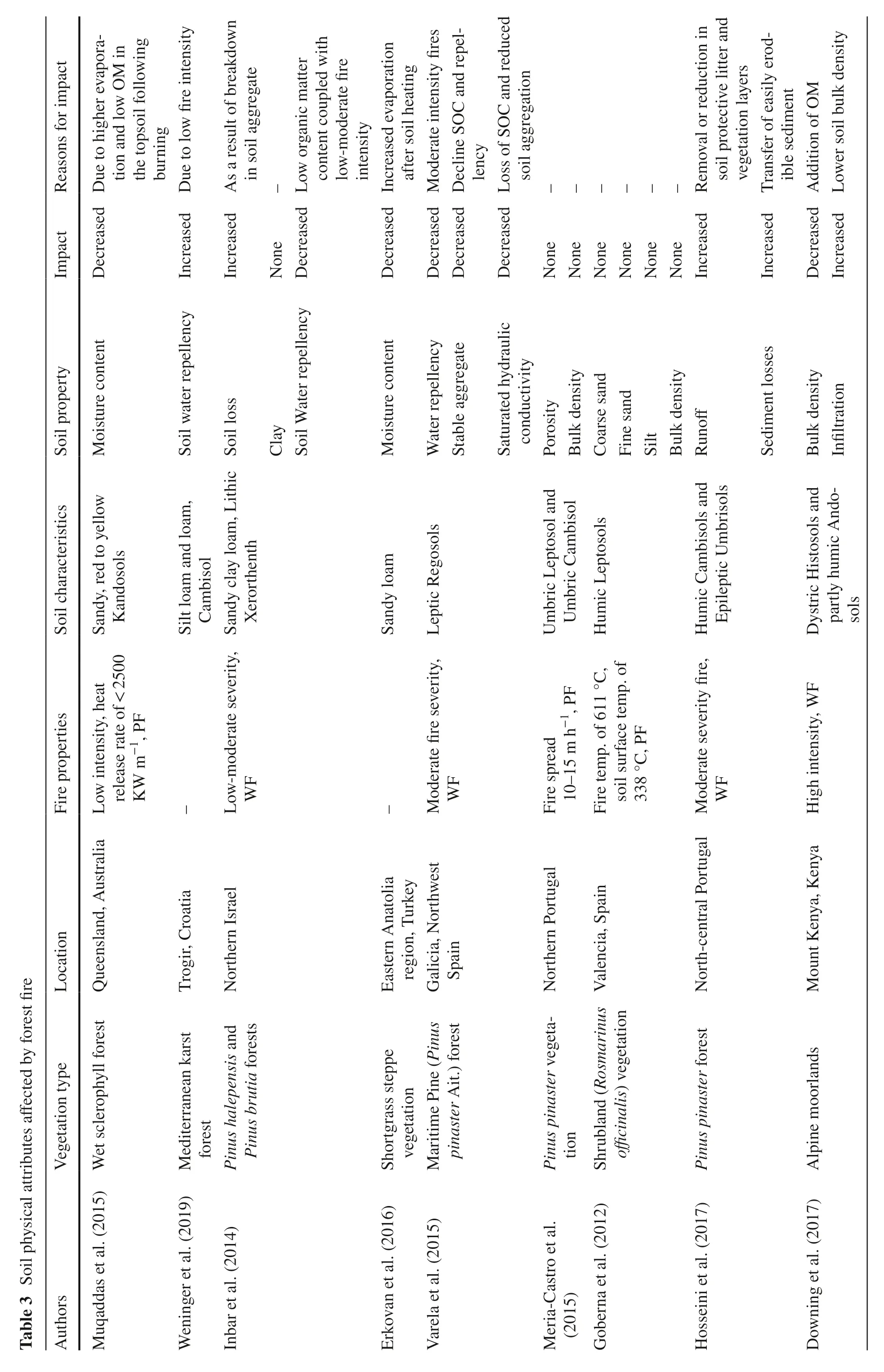

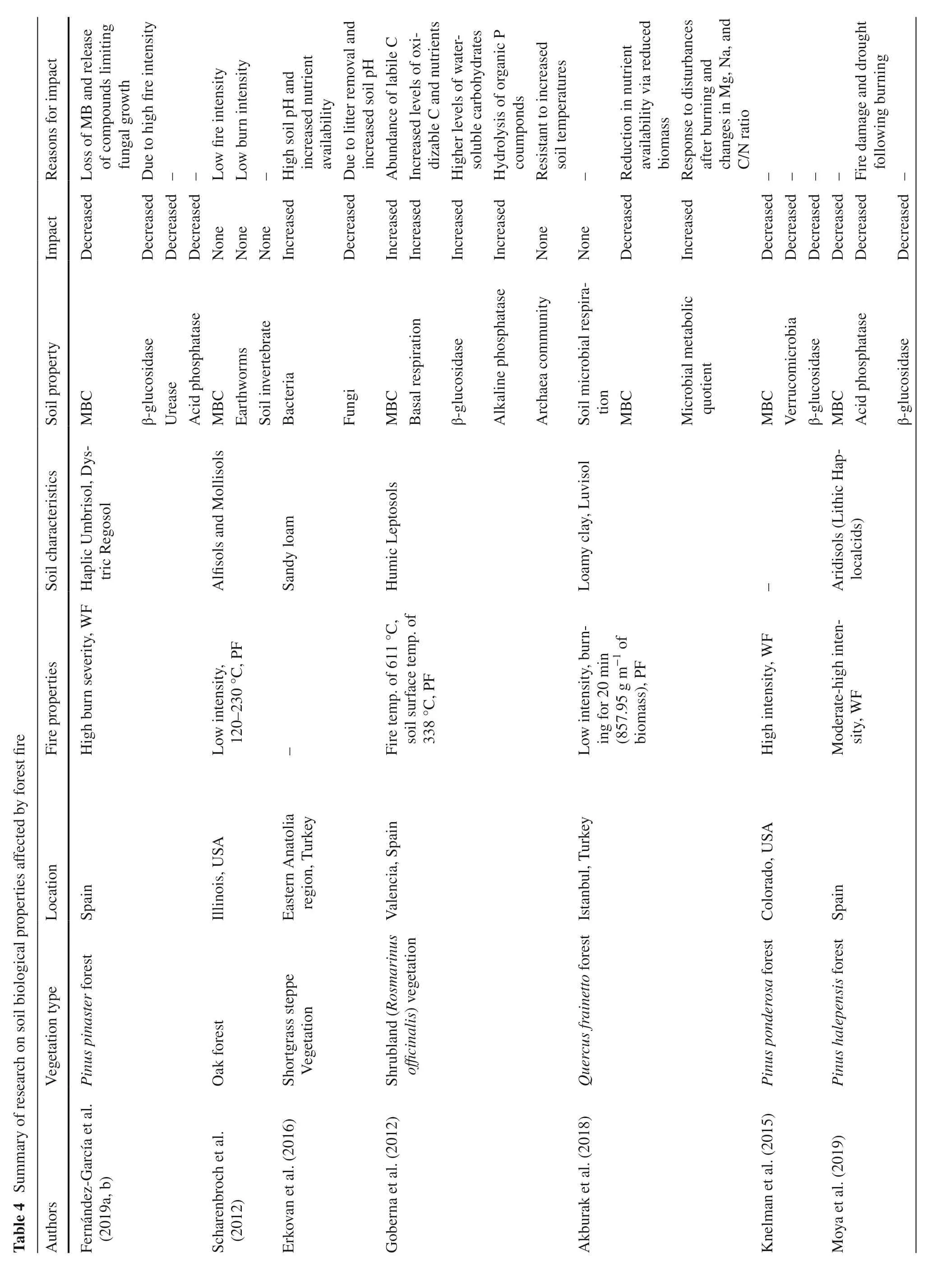
Nitrogen (N) is noted as the most limiting nutrient in cropping and forest ecosystems (Agbeshie et al.2020).It is unique and exists in the soil matrix as available or mineral N (e.g.,NH4+and NO3-) and organic N (Zhang and Biswas 2017;Yang et al.2020).The effect of forest fires leads to the depletion of N via volatilization which occurs when soil temperatures exceed 200°C (Caon et al.2014).In addition to volatilization,N loss following fire may result from erosion and leaching (Huddell et al.2020;Cheng et al.2021;Qiu et al.2021).However,the effects of forest fires on soil N present contradictory results yet to be understood.For example,field studies undertaken by Muqaddas et al.(2015) in Australia revealed that low intensity prescribed fires decrease total N in the topsoil of a wet sclerophyll forest.Studies by Franco et al.(2019) in aP.halepensisandQ.ilexforest in Spain,showed that forest fires significantly decreased total N in the topsoil.Significant lower total N was also recorded in a Sapri-dystric Histosol soil under a moist Scots pine forest following a high-intensity wildfire in Poland (Dzwonko et al.2015).According to Hahn et al.(2021),a prescribed fire (low to moderate intensity) set in the Fishburn forest in Virginia,USA,accounted for a 33%decline in total N.A similar trend was observed by Certini et al.(2011) who reported decreased total N after a forest fire.A systematic review by Sánchez Meador et al.(2017)revealed the impacts of forest fire on soil N and the decline in total N in the A horizon.Volatilization is the main driver for N losses in mineral soils after forest fires (Muqaddas et al.2015;Fraterrigo and Rembelski 2021;Pellegrini et al.2021).However,studies by Akburak et al.(2018) in aQ.frainettoforest in Turkey,Fernández-García et al.(2019a,b) for aP.pinasterforest in Spain,and Moya et al.(2019)for aP.halepensisforest,also in Spain,showed no differences in total N contents after a fire,whilst Goberna et al.(2012) forR.officinalisL.vegetation in Spain,Alcañiz et al.(2016) inP.halepensisforest in Spain,Hosseini et al.(2017)in aP.pinasterforest in Portugal,and Liu et al.(2018) for grassland vegetation in China,reported increased total N in the A horizon following fire.The increase in total N is due to the addition of ashes rich in nitrogen,especially after low-intensity fires,and a higher rate of mineralization of organic litter which releases a higher amount of N (Alcañiz et al.2018;Ferrer et al.2021;Wan et al.2021).
Forest fires generally result in increased soil temperatures and higher pH,which impact inorganic nitrogen (NH4+and NO3-) dynamics via mineralization and nitrification processes (Calvo et al.2016;Verma and Jayakumar 2018;Kong et al.2019).After forest fires,nitrogen,which is not completely volatilized,is mineralized to NH4+-N (Jones et al.2015;Verma et al.2019)and can be further nitrified to NO3--N under favourable conditions (Agbeshie et al.2020).Typically,there is an increase in available nitrogen (NH4+-N and NO3--N)following fire (Table 2).Significant increased NH4+-N and NO3--N after fire have been reported by Wang et al.(2014),Adkins et al.(2019),and Hinojosa et al.(2021).Badía et al.(2014) reported increased NH4+-N after a fire in an Aleppo pine forest.Similarly,Goberna et al.(2012)reported increased NH4+-N and NO3--N inR.officinalisvegetation following a prescribed fire.In an oak forest in Iran,the occurrence of mixed wildfire intensities resulted in increased NO3--N in the topsoil compared to unburnt plots (Heydari et al.2017).A significant increase in NH4+-N and NO3--N following fire in the A horizon is largely associated with higher ash deposition coupled with increased N mineralization and nitrification as conditioned by temperature,pH,and microbial activities (Liu et al.2018;Rodriguez-Cardona et al.2020).A review by Caon et al.(2014) noted that ammonification and nitrification processes were strongly correlated with increased soil temperatures,water content,and pH.
Nutrient availability
Significantly increased nutrient availability following forest fires is associated with ash deposition and organic matter combustion.Decomposition of organic matter changes the availability and distribution of nutrients contained in the ash deposits (Alcañiz et al.2018).Most notably,concentrations of exchangeable cations (Ca2+,Mg2+,K+,and Na+),phosphorus,and mineralized nitrogen (NH4+and NO3-)increase with increasing fire intensity (Franco et al.2019;Verma et al.2019;Chungu et al.2020) (Table 2).However,Ca,Mg,K,and P are less volatile compared to NH4+and NO3-(James et al.2018).
Phosphorus (P),regarded as the second most limiting plant nutrient,is required by crops as the available form phosphate (PO43-) (Agbeshie and Abugre 2021).During forest fires,organic phosphorus in the organic matter mineralizes to form available orthophosphate (PO43-) for plant absorption (Zhang and Biswas 2017).Under aP.pinasterforest in Spain,Fernández-García et al.(2019a,b) found higher available P in the topsoil of a burnt plot compared to an unburnt plot after a high-intensity wildfire.Similarly,Moya et al.(2019) observed a significantly higher available P in the A horizon (10 cm) of a burntP.halepensisforest as compared to the control plot.In grasslands,Liu et al.(2018)reported elevated available P concentrations in the upper 10 cm soil layer following a low-intensity wildfire.Following a prescribed fire,Goberna et al.(2012) and Alcañiz et al.(2016) reported significantly higher available P in the A horizon (upper 10 cm) in shrubland vegetation and in aP.halepensisforest.Caon et al.(2014),Alcañiz et al.(2016)and Zhang and Biswas (2017) showed that the increase in available P in the A horizon was due to the transformation of organic P to available P through mineralization,the addition of ash onto the soil surface,lower P losses due to higher vaporization,and the formation of apatite (insoluble P) in the presence of calcareous substances.
Exchangeable cations such as Ca2+,Mg2+,K+,and Na+have been reported in numerous studies to increase after forest fires (Shrestha and Chen 2010;Elliott et al.2013;Rahimi et al.2020;Alexakis et al.2021).In the A horizon of a boreal stand,Maynard et al.(2014) found significantly high levels of Ca2+,Mg2+,K+in burnt plots compared to unburnt plots.In a pine forest,Alcañiz et al.(2016) reported an increased exchangeable cation immediately after a low intensity prescribed fire.Dzwonko et al.(2015) also reported significantly higher exchangeable cations in burnt plots over controls in a Scots pine forest when a high severity wildfire occurred.Under a low intensity prescribed fire in aQ.frainettoforest,Akburak et al.(2018) also found significantly high Ca2+and Mg2+levels in the A horizon (upper 5 cm) immediately after burning.In addition,Johnson et al.(2014) reported an elevated and consistent Ca2+content two years post-fire.However,other researchers have reported no change or a decline in exchangeable cations after fires.For example,in grassland vegetation,Liu et al.(2018) reported an insignificant amount of K+between pre-and post-wildfire-affected soils.Similarly,Johnson et al.(2014) found insignificant Mg2+and K+levels in pre-and post-wildfire in a mixed conifer forest.An increase in exchangeable cations is associated with the combustion of organic materials which releases ions into the soil matrix in the form of ash (Switzer et al.2012;Lucas-Borja et al.2021).In addition,exchangeable cations exhibit high vaporization thresholds,and thus are highly resistant to volatilization losses (Zhang and Biswas 2017).However,increased exchangeable cation concentrations in soils after fire may be short-lived and may soon return to their pre-fire levels (Granged et al.2011;Maynard et al.2014;James et al.2018).Due to their high vaporization thresholds,losses of exchangeable cations may arise from erosion of ash and leaching of cations,coupled with plant uptake during post-fire succession (Caon et al.2014).
Physical attributes
Soil physical properties,to a large extent,affect plant development as do soil chemical attributes.Several researchers have reported the impact of forest fires on soil physical properties (Table 3),with an emphasis on texture,bulk density,porosity,aggregate stability,and water content and repellency (Albalasmeh et al.2013;Thomaz and Fachin 2014;Alcañiz et al.2018;Dove et al.2020;Busse et al.2021).
Soil texture
Soil texture,which indicates the particle-size distribution in the soil,is the relative proportion of inorganic elements<2 mm of mineral soil.The texture is not easily affected by forest fires since sand,silt,and clay exhibit high temperature thresholds (Alcañiz et al.2016).The temperature threshold for clay (400-800°C) is lower than for sand and silt (1414°C) (Neary et al.2005).Hence,clay particles are more affected with regards to texture.In a pine forest on a sandy clay loam,Inbar et al.(2014) recorded a marginal decrease in clay particles in the 2-5 cm soil depth,with a resultant gain in silt particles after a wildfire.Under oak forest,Heydari et al.(2017) reported adecline in clay content in the A horizon following a high severity wildfire.They further noted that the loss of clay particles after a fire resulted in a gain of sand particles.Likewise,Granged et al.(2011) also reported an increase in percent sand particles relative to a decline in clay particles.Despite the reduction in clay particles in favour of silt and sand,almost all researchers did not report a change in soil texture (Scharenbroch et al.2012;Heydari et al.2017;Moya et al.2019).However,the increase in sand and silt particles after a wildfire is due to the collapse and subsequent destruction of clay lattice structure(Alcañiz et al.2018).Thus,the collapse of clay particles leads to the aggregation of finer particles to form larger or coarser sand and silt particles.Heydari et al.(2017) presented similar findings and reported that,under higher soil temperatures,there is an irreversible deletion of hydroxyl ions (OH-) and destruction of crystalline clay structure,leading to cementation and aggregation of clay particles to the size of sand.
Soil bulk density
Forest fires negatively impact soil bulk density (Granged et al.2011;Jordán et al.2011;Heydari et al.2017),with its resultant effect on soil porosity.However,there are contrasting results in the literature,with some studies reporting lower soil bulk density after fire (Chief et al.2012;Downing et al.2017),while others found no significant effect on bulk density (Goberna et al.2012;Meria-Castro et al.2015).Heydari et al.(2017) reported increased soil bulk density following a wildfire in an oak forest in Ilam,Iran.Similarly,Granged et al.(2011) and Jordán et al.(2011)found significantly higher soil bulk densities in burnt soil following prescribed and wildfire in Australia and Mexico,respectively.Similarly,Verma et al.(2019) observed higher soil bulk densities in tropical dry deciduous forests of the Western Ghats,India,following the incidence of 12-year wildfires.The increase in soil bulk density after fire is a result of the collapse of soil aggregation and the destruction of soil organic matter (Alcañiz et al.2018).Heydari et al.(2017) also reported similar findings and concluded that the destruction of structure and pores,coupled with the decline in organic matter increased soil bulk density.Verma et al.(2019) also observed that the destruction of soil aggregation and organic matter decline,as well as the clogging of pore spaces by ash and dispersed clay particles during forest fires leads to increased soil bulk density.Soil bulk density is inversely proportional to soil porosity,thus an increase in bulk density results in decreased porosity,with further ramifications on hydrological properties (Wieting et al.2017;Lucas-Borja et al.2020).In contrast,Chief et al.(2012) reported lower soil bulk densities under shrubland vegetation in Nevada,USA after a prescribed fire.Similarly,in an alpine moorland,Downing et al.(2017) reported a lower soil bulk density after a high-intensity wildfire on Mount Kenya in Kenya.They found that lower bulk density was due to the addition of partially decomposed organic matter,coupled with soil vapour expansion.Consequently,further research on the effect of forest fires on soil bulk density are required to clarify fully the mechanisms underlining the impact of fire on bulk density.
Soil aggregate stability
Soil temperatures between 30 and 60°C have a positive effect on soil aggregate stability by the thermal transformation of sesquioxides which help to bind clay particles to form strong silt particles.Also,organic matter in the soil has similar functions by acting as a cementing agent with soil particles.However,the increase in soil temperatures from 200 to 460°C results in charring or the complete oxidation of organic matter (Badía et al.2014).This leads to the destruction of soil structure via disaggregation and breakdown of soil macropores (Alcañiz et al.2018).However,there have been inconsistencies in the literature on the impact of fire on soil aggregate stability.In their study on mixed fire intensities in a fir forest,Jordan et al.(2011) found no significant change in soil aggregate stability when low severity wildf rie occurred.Likewise,Scharenbroch et al.(2012) noted that a low-intensity fire (120-230°C) did not alter soil aggregate stability of an oak forest in Illinois,USA.In other studies,Jordán et al.(2011) observed increased aggregate stability in burnt soils following a low severity wildfire in a fir forest.Similarly,Granged et al.(2011) also observed significantly high aggregate stability in burnt soils in a Mediterranean heathland.An increase in aggregate stability has been linked to the development of an organo-mineral complex arising from the combination of organic matter and soil minerals to form a hydrophobic layer on the aggregates (Varela et al.2010;Alcañiz et al.2018).This increase in soil aggregate stability highlights the importance of organic matter as a cementing agent.In contrast,Varela et al.(2015) reported that medium-severity wildfires in a maritime pine forest reduced aggregate stability on a Leptic Regosol soil in Galicia,northwest Spain.In a high-severity fire,Jordán et al.(2011) noted decreased aggregate stability of soil in a fir forest.In addition,Urbanek (2013) reported a similar decline in soil aggregate stability following fire.Mataix-Solera et al.(2011) noted that the decrease in soil aggregate stability was associated with burn severity,soil type,and the type and amount of the cementing agent.However,reduced aggregate stability is more associated with the breakdown or destruction of organic matter as the cementing agent.Thus,further research on soil aggregate stability following fire is required to broaden our knowledge of soil aggregate stability as impacted by burn severity,soil type,or the cementing agent involved.
Soil water repellency
Soil water repellency (SWR) is an important soil physical property and is affected by fire (Bodí et al.2012;Robichaud et al.2016).SWR reduces water infiltration,and increases runoff,with associated enhanced soil erosion(Weninger et al.2019).Soil water repellency can be created,increased,or decreased by forest fires (Scharenbroch et al.2012;Pereira et al.2013;Varela et al.2015;Hosseini et al.2017).Studies by Weninger et al.(2019) in a Mediterranean karst forest in Croatia showed that soil water repellency increased after wildfire.In a prescribed fire (142°C)in Australia,Granged et al.(2011) noted an increase in soil water repellency in a Eucalyptus forest soil.However,Varela et al.(2015) reported a decrease in soil water repellency following a moderate-intensity wildfire in aP.pinasterforest in Galicia,northwest Spain.Similarly,Inbar et al.(2014)reported a decrease in soil water repellence in burnt soils with a water-drop penetration time<5 s when a low-moderate severity wildfire occurred inP.halepensisandP.brutiaforest soils.Increase in soil water repellency is due to the hydrophobic layer formed on mineral particles during organic matter combustion (Mataix-Solera et al.2011).During the fire,hydrophobic compounds move downwards in the soil and condense on cooler particles,forming a hydrophobic coat.However,Zavala et al.(2010) noted that water repellency generally increased as soil temperatures approach 200°C and was destroyed at temperatures above 300°C.In contrast,lower soil water repellence on surface soils results from:(1) the soil texture-water repellency decreases more in fine-textured soils than coarse-textured ones (Mataix-Solera et al.2011;Inbar et al.2014);(2) organic matter coupled with moisture content-low organic matter and high water content increases soil water repellency after fires (González-Pelayo et al.2015;Mao et al.2019);(3) depth of soil profile-deeper profiles show increased water repellency due to the condensation of hydrophobic organic coating on cooler mineral particles (Rodríguez-Alleres et al.2012;Varela et al.2015);and,(4) surface temperatures-high surface temperatures during burning completely break down soil hydrophobicity (Badía et al.2014;Plaza-Álvarez et al.2018).Infiltration and erosion processes are closely connected to soil water repellency,such that water repellence increases overland flow with a decrease in water infiltrability.Similarly,Hosseini et al.(2017) observed that increased runoffand sediment loss were associated with increased water repellency in aP.pinasterforest in north-central Portugal following a wildfire.Inbar et al.(2014) also reported increased soil loss on burnt plots underP.halepensisandP.brutiaafter wildfire.They concluded that the low to moderate wildfire resulted in a breakdown in soil aggregates and increased water repellency,which gave rise to increased runoff.
Biological properties
The heating of soils from wildfires or prescribed burns causes fluctuations in soil biological properties (microorganisms,biota activities and communities,soil invertebrates).Fire affects biological properties by directly killing or denaturing soil biota through combustion or indirectly by post-fire plant recovery or changes in soil organic matter (Knelman et al.2015;Jonathan et al.2016;Ibáñez et al.2021).In their review of prescribed burning on soil attributes,Alcañiz et al.(2018) noted that the temperature needed to kill most soil biological matter ranges from 50 to 120°C.Santín and Doerr (2016) also noted that temperatures from 50-150°C result in the killing of fine roots,bacteria,fungi,and seeds within the soil.Several researchers have documented the impact of forest fires on soil biological properties (Table 4).
For example,on a Haplic Umbrisol underP.pinasterin Spain,Fernández-García et al.(2019a,b) reported that the highest microbial biomass carbon (MBC) was in unburnt soil relative to a burnt soil following a wildfire.Akburak et al.(2018) studied the effects of low-intensity prescribed fire on soil microbes underQ.frainettoforest and recorded a decline in MBC in burnt soils compared to unburnt soils.Similarly,Knelman et al.(2015) and Moya et al.(2019)observed decreased MBC in burnt soils after high severity wildfires inP.ponderosa(USA) andP.halepensisforests(Spain),respectively.The reduction in MBC could be due to the loss of microbial biomass by fire,a reduction in nutrient availability,and the release of compounds limiting fungal growth (Akburak et al.2018;Fernández-García et al.2019a,b).However,some researchers reported an increase in microbial biomass in burnt soils following fire which may be due to the addition of mineral ash and the abundance of labile C (Goberna et al.2012;Fultz et al.2016).
In the Anatolia region of Turkey,Erkovan et al.(2 016)recorded changes in the microbial community after forest fires.According to the researchers,fire resulted in a shift in the microbial community from fungal dominant one towards a bacterial community.This was also noted by Fultz et al.(2016) who reported a shift in microbial community from fungi to bacterial-dominated in a burnt grassland soil in Texas,USA.This was similar to the findings of Switzer et al.(2012) and Oliver et al.(2015) who observed modifications of microbial communities from fungal to bacterial-dominated ones.The shifts in microbial communities could be due to increased pH and the availability of nutrients (base cations) following fire (Mikita-Barbato et al.2015;Pressler et al.2019;Wang et al.2020).In addition to microbial community modifications,fire impacts enzymatic activities in burnt soils.For example,Knelman et al.(2015),Fultz et al.(2016),and Moya et al.(2019) reported decreased β-glucosidase activity in burnt forest soils and associated the decline to the incidence of fire and the abundance of nutrients from ash depositions.Fernández-García et al.(2019a,b) and Moya et al.(2019)observed decreased acid phosphatase after forest fires,and this could be due to damage or a decline in microbial biomass activity.Decreased acid phosphatase could also be due to higher available phosphorous added to the soil following fire which would diminish acid phosphatase activity (Xue et al.2014).
Conclusion
The impact of forest fires on soil properties is largely dependent on burn severity,consisting of fire intensity and duration.Wildfires and prescribed fires affect biological,chemical,and physical properties.Fire leads to complete or partial burning of organic matter and ash deposition on the soil surface.Thus,the mixing of ash and partially burnt organic materials into the soil significantly alters soil chemistry.However,the impacts of fire on soil chemical properties are highly variable and suggest that low-intensity fires result in little change or an increase in available nutrients (K+,Ca2+,Mg2+,PO43-,NH4+) and pH due to ash deposition.High-intensity fires decrease soil organic matter and total N due to combustion and volatilization losses.It is,therefore,imperative to stabilize burnt sites to increase nutrient content from ash deposition and mineralization,and to a larger extent,prevent high-intensity forest fires and volatilization losses.It has been noted in this review that soil physical and biological properties are generally negatively affected by forest fires.Water-repellent soils created or increased after fire reduce water infiltrability,leading to excess runoffwith associated increased risk of erosion.Soil micro-biota are highly sensitive to environmental changes and are completely killed at soil temperatures above 120°C.Current global warming,higher temperatures,and extreme droughts will significantly increase the risk of forest fires.Consequently,the use of low-intensity fires (prescribed burning) as a management tool to reduce the fuel load in forested areas is highly recommended to reduce the incidence of wildfires.Likewise,comprehensive soil and forest management is needed to restore fire-disturbed soil ecosystems.It is also critical to conduct further research in tropical climates to better understand the dynamics of forest fires on soil properties in different ecosystems.
Author contributionsThis work was carried out in collaboration among all authors.AAA conceptualized the paper;AAA,SA,TA and RA performed literature search;AAA,SA,and TA wrote the manuscript.All authors read and approved this manuscript.
Declarations
Conflict of interestThe authors declare that they have no competing interests.
Open AccessThis article is licensed under a Creative Commons Attribution 4.0 International License,which permits use,sharing,adaptation,distribution and reproduction in any medium or format,as long as you give appropriate credit to the original author(s) and the source,provide a link to the Creative Commons licence,and indicate if changes were made.The images or other third party material in this article are included in the article’s Creative Commons licence,unless indicated otherwise in a credit line to the material.If material is not included in the article’s Creative Commons licence and your intended use is not permitted by statutory regulation or exceeds the permitted use,you will need to obtain permission directly from the copyright holder.To view a copy of this licence,visit http://creativecommons.org/licenses/by/4.0/
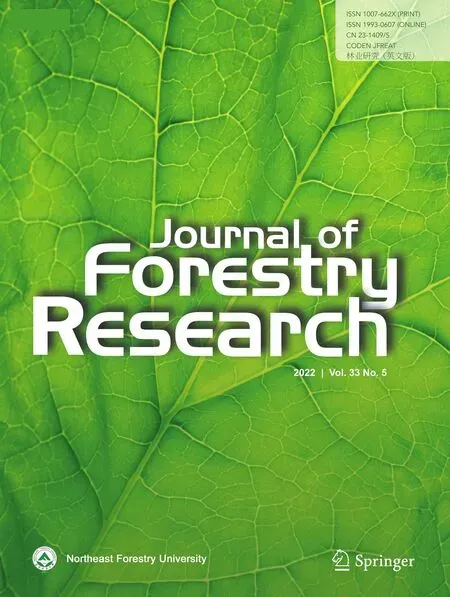 Journal of Forestry Research2022年5期
Journal of Forestry Research2022年5期
- Journal of Forestry Research的其它文章
- Correction To:Epidemiological derivation of flux-based critical levels for visible ozone injury in European forests
- Correction to:The dissemination of relevant information on wildlife utilization and its connection with the illegal trade in wildlife
- Improved guidelines for any-aged forestry
- Fuel and vegetation changes in southwestern,unburned portions of Great Smoky Mountains National Park,USA,2003–2019
- The effects of fire and seasonal variations on soil properties in Juniperus excelsa M.Bieb.stands in the Alborz Mountains,Iran
- Responses of terrestrial bryophytes to simulated climate change in a secondary evergreen broad-leaved forest in southern China
